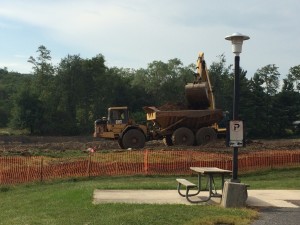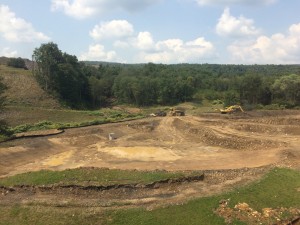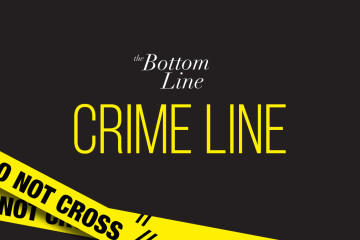Allegany County Government Constructing Stormwater Management Pond Behind Residence Halls

Over the summer, the Allegany County Board of Public Works and Soil Conservancy District began developing a stormwater management pond on the property behind Cambridge Hall and Westminster Hall, according to Angela Patterson, a land use & planning engineer in the Allegany County Department of Community Services.
Frostburg State University owns this property and agreed to the construction plans, according to Patterson.
The Allegany County Board of Public Works sought and administered grant funding for the project, which is being completely funded by the Chesapeake Bay Trust. Constructing the stormwater management pond will cost $700,000, according to Patterson.
Designs for the project were developed by the Allegany County Soil Conservancy District.
Prior to the start of this project, the property was densely wooded, but the trees were removed to create space for the pond.
Patterson said that the pond will treat 100 acres of drainage area in the city.
According to Patterson, heavy rains can cause stormwater drainage pipes in the city to become overworked, and stormwater may discharge into Sand Spring, which is a part of the Chesapeake Bay watershed. This discharge could release potential pollutants into the watershed.
“The city of Frostburg is working on a multi-million dollar effort to build new pipes for stormwater and for sewer water,” said Patterson, who said that the project is about halfway completed. The state requires that sewer water must be separated from stormwater.
“[This project] is somewhat voluntary,” said Patterson. “The state is not mandating it, but it’s for the good of the Chesapeake Bay.”

According to the Environmental Protection Agency, “Ponds treat incoming stormwater runoff by allowing particles to settle and algae to take up nutrients. The primary removal mechanism is settling as stormwater runoff resides in this pool, and pollutant uptake, particularly of nutrients, also occurs through biological activity in the pond. Traditionally, wet ponds have been widely used as stormwater best management practices.”




